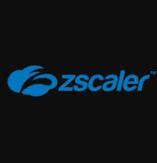What Is CSPM Software?
CSPM (Cloud Security Posture Management) software is an essential tool for businesses and organizations seeking to safeguard their presence in the cloud. As more businesses shift to the cloud for data storage and computing, it becomes increasingly critical to have a strong security policy in place. CSPM software assists enterprises in monitoring, assessing, and managing their cloud security posture in order to identify and mitigate potential risks and vulnerabilities.
One of the primary benefits of CSPM software is its ability to provide a comprehensive picture of an organization's whole cloud infrastructure, including applications, services, and resources. This provides IT teams with a comprehensive picture of their cloud security posture, allowing them to identify any security vulnerabilities or misconfigurations that could make their firm vulnerable to cyber assaults.
CSPM software also has automated remediation capabilities, which enable a more efficient and effective reaction to any security concerns discovered during the monitoring process. This saves organizations time and resources because manual repair is a time-consuming and labor-intensive operation. Furthermore, CSPM software frequently has built-in compliance frameworks and reports, allowing businesses to ensure they are following industry and regulatory guidelines.
This not only contributes to a solid security posture, but also allows firms to demonstrate compliance to clients and auditors. When selecting a CSPM software, it is critical to consider its compatibility with your existing cloud infrastructure, as well as the amount of support and integrations provided. It should also provide for specific policies and the flexibility to schedule regular security assessments.
In today's increasingly digital landscape, powerful CSPM software is no longer a luxury, but a must-have for enterprises of all sizes looking to stay ahead of potential cyber threats. It secures sensitive data and key assets while also providing enterprises and their consumers with peace of mind.
What Are The Recent Trends In CSPM Software?
In recent years, the use of cloud services has grown tremendously across industries, necessitating a greater demand for robust cloud security. As a result, the need for Cloud Security Posture Management (CSPM) software has increased significantly. CSPM software assists enterprises in monitoring and securing their cloud environments by detecting misconfigurations, compliance violations, and potential security threats.
1. Transition To A Multi-Cloud Environment: Many businesses have embraced a multi-cloud strategy, utilizing different cloud providers for various applications and workloads. This trend has resulted in a rise in the number of CSPM solutions capable of supporting numerous cloud providers. Buyers should search for CSPM software that can manage all of their cloud environments and provide a consolidated view of their security posture.
2. Automation And Orchestration Capabilities: As cloud environments get more sophisticated, enterprises find it difficult to manually monitor and secure their cloud infrastructure. Automation and orchestration play an important role here. Leading CSPM solutions now include automation capabilities that allow them to automatically discover and remediate security risks, saving enterprises time and resources.
3. Integration With DevOps Tools: CSPM software that integrates with DevOps tools enables firms to include security into the development process, often known as DevSecOps. This enables enterprises to find and repair security flaws in their code before deploying it to the cloud. Buyers should investigate CSPM systems that integrate seamlessly with major DevOps tools such as Jenkins, GitLab, and Kubernetes.
4. Enhanced Threat Detection And Response: As cyber threats evolve, so does CSPM software, which now provides advanced threat detection and response capabilities. Buyers should seek for systems that provide real-time monitoring and alerts for suspicious activity, as well as robust incident response procedures to prevent security breaches.
5. Compliance Emphasis: As cloud compliance requirements grow, CSPM software adapts to meet those standards. Buyers should ensure that the CSPM system they select supports applicable compliance requirements such as PCI-DSS, HIPAA, and GDPR.
Benefits Of Using CSPM Software
CSPM (Cloud Security Posture Management) software is a useful tool for enterprises to ensure the security of their cloud infrastructure. It enables thorough monitoring, assessment, and remediation of potential security threats, resulting in a holistic approach to cloud security. Here are some advantages of utilizing CSPM software, which make it a necessary investment for any firm.
1. Improved Visibility And Control: CSPM software gives a business a unified view of its whole cloud environment, including resources, configurations, and vulnerabilities. This insight enables greater control and administration of the cloud infrastructure, reducing the risk of security breaches.
2. Proactive Risk Assessment: With continuous monitoring and scanning capabilities, CSPM software may detect potential security threats in real time. This proactive approach enables firms to keep ahead of risks and avoid potential data breaches or regulatory problems.
3. Streamlined Compliance: Compliance is an important part of cloud security, but it can be difficult to manage manually. CSPM software automates compliance checks and generates paperwork to demonstrate regulatory conformance, saving enterprises time and resources.
4. Real-Time Warnings And Reminders: The CSPM software generates real-time warnings and reminders for any security misconfigurations or violations. These notifications enable enterprises to take immediate action to fix vulnerabilities and ensure a secure cloud environment.
5. Simplified Remediation: CSPM software not only identifies hazards, but also provides solutions to resolve them. This tool enables enterprises to address security issues quickly and efficiently, lowering the chance of a data breach.
6. Cost-Effective: CSPM software can help firms save money over time by averting costly security breaches and reducing the time and effort necessary for manual security assessments. It also improves resource use, resulting in cost savings for cloud infrastructure management.
7. Scalable And Flexible: CSPM software is intended to meet the needs of businesses of all sizes and is easily adaptable to changing business requirements. Whether an enterprise is employing various cloud platforms or expanding its operations, CSPM software can meet their changing needs.
8. Integration With Other Security Products: CSPM software works with other security products like SIEM (Security Information and Event Management) and IAM (Identity and Access Management) to provide a comprehensive security framework for a company's cloud infrastructure.
Important Factors To Consider While Purchasing CSPM Software?
When it comes to choosing CSPM (Cloud Security Posture Management) software, there are numerous key elements to consider to guarantee you make the right option for your company. With the increased use of cloud environments, businesses must have strong security measures in place to secure sensitive data and applications. However, with so many CSPM software alternatives available on the market, it can be difficult to evaluate which one is best for your firm. To help you make this decision, below are the main factors to consider when selecting CSPM software:
1. Security Capabilities: The primary goal of CSPM software is to secure your cloud infrastructure. As a result, it is critical to analyze the security capabilities of any product you are considering. Look for capabilities like real-time monitoring, threat detection, and automatic remediation to guarantee your cloud assets are fully protected.
2. Integration With Cloud Platforms: CSPM software should work easily with your existing cloud platforms and services, such as AWS, Microsoft Azure, or Google Cloud Platform. This will provide you with a consolidated picture of your whole cloud environment, allowing you to simply manage security across all platforms.
3. Compliance Requirements: Depending on your industry, your business may be required to follow specific regulations and standards. It is critical to ensure that the CSPM software you select meets compliance standards like as HIPAA, GDPR, and PCI DSS.
4. Usability: Your CSPM software should have a simple and intuitive UI. This will help your team navigate and manage your cloud security operations more efficiently.
5. Scalability: As your firm grows and expands, your cloud infrastructure is likely to follow suit. As a result, it is critical to select CSPM software that can scale with your organization and support future changes to your cloud environment.
6. Automation Capabilities: As cloud systems become more sophisticated, manual security operations can be time-consuming and error-prone. Look for CSPM software that provides automated security procedures and can perform proactive remediation to save your team time and effort.
7. Reporting And Analytics: In addition to security features, your CSPM software should include extensive reporting and analytics. This will give you valuable information about your cloud security posture, including vulnerabilities, threats, and compliance status.
8. Customer Support and Training: As with any product, it is critical to have consistent customer support and training available. Look for CSPM software vendors who provide training materials and have a responsive support team to help with any problems or concerns. By taking these aspects into account, you can narrow down your selections and choose the best CSPM software for your organization. Remember that prioritizing security and compliance capabilities, as well as integration and scalability, is critical for ensuring your cloud infrastructure is secure and meets all regulatory standards. Make sure to conduct comprehensive research and comparisons of various CSPM software choices to determine the best fit for your organization's specific goals and budget.
What Are The Key Features To Look For In CSPM Software?
CSPM (Cloud Security Posture Management) software is an essential tool for businesses seeking to secure their cloud infrastructure. With the expansion of cloud services and adoption, the demand for effective CSPM software has increased more than ever. However, with so many options available on the market, it might be difficult to choose the finest CSPM software for your company. To assist you in making an informed decision, below are the essential features to look for in CSPM software:
1. Cloud Platform Support: One of the most important considerations is if the CSPM software is compatible with your cloud environment. Ensure that the program supports all of your organization's cloud platforms, such as AWS, Azure, Google Cloud, and so on.
2. Real-Time Monitoring And Alerting: In today's fast-paced digital landscape, your CSPM software must support real-time monitoring and alerting. This feature enables you to notice and respond to security threats and concerns instantly, lowering the likelihood of a data breach.
3. Automated Security Assessments: Look for CSPM software that does automated security assessments and continuously monitors your cloud infrastructure for security concerns, misconfigurations, or compliance issues. This functionality relieves the strain of doing manual security checks and ensures that your cloud environment is always secure.
4. Policy Management And Customization: Each firm has its own security rules and compliance needs. That is why it is critical to select CSPM software that includes adjustable policies and allows you to tailor them to your individual requirements.
5. Remedial And Compliance Reporting: In the event of a security breach or non-compliant behavior, a strong CSPM software should be able to provide remedial recommendations and generate compliance reports. These tools help firms swiftly discover and handle security concerns or regulatory problems.
6. User-Friendly Interface: A user-friendly interface is critical for the CSPM software's ease of use and adoption within your organization. Before making a purchase, try the software's interface and ensure that it is user friendly.
7. Integration With Other Security Products: An effective CSPM software should work seamlessly with other security products to give a comprehensive security solution. It should also allow API access to interact with your current security infrastructure. By taking into account these critical aspects, you can select the best CSPM software for your organization's specific requirements while also ensuring the security and compliance of your cloud environment. Keep in mind that investing in dependable CSPM software is critical for developing a robust and resilient cloud security strategy.
Why Do Businesses Need CSPM Software?
Cloud Security Posture Management (CSPM) software is a crucial tool for cloud-based enterprises. Organizations face significant security concerns as cloud computing and infrastructure become more widely adopted, which traditional on-premise security solutions cannot manage. As a result, businesses need to invest in CSPM software to effectively monitor their cloud security posture.
One of the key reasons for enterprises to use CSPM software is to get visibility and control over their cloud environments. With the cloud, enterprises have a distributed and dynamic architecture, making it difficult to manage all resources and security setups. The CSPM software provides a unified dashboard that enables enterprises to monitor and manage their whole cloud environment, including all apps, services, and data.
Furthermore, CSPM software enables firms to ensure compliance with numerous legislation and standards. Organizations working with sensitive data must follow industry-specific standards such as HIPAA, GDPR, or PCI DSS, and failure to do so can result in significant fines and reputational harm. CSPM software provides continuous monitoring and compliance checks, alerting firms to potential violations before they occur.
Another important reason to invest in CSPM software is to protect against modern cyber threats. Because fraudsters are constantly changing and targeting the cloud, businesses require advanced security measures to combat these attacks. CSPM software employs proactive security methods, such as threat detection and vulnerability scanning, to discover and address potential security risks before they are exploited.
CSPM software not only improves security but also saves businesses money. Because cloud services are generally pay-per-use, CSPM software can assist firms in optimizing their cloud spend by detecting unused or underutilized resources and offering recommendations to right-size or terminate them, resulting in long-term cost savings.
Overall, the value of CSPM software to enterprises is apparent. It not only ensures the security of the cloud environment but also aids in compliance, cost savings, and risk mitigation. As a result, businesses seeking to prosper in the cloud must invest in trustworthy and reliable CSPM software to safeguard their essential data and assets.
How Much Time Is Required To Implement CSPM Software?
Implementing CSPM (Cloud Security Posture Management) software is an important step towards securing your organization's cloud environment. It's a complicated procedure that takes time, effort, and careful planning. The time required to adopt CSPM software depends on a number of factors, including your organization's size, the complexity of your cloud infrastructure, and the capabilities of the CSPM solution you choose.
On average, a full implementation of CSPM software might take anything from a few weeks to months. The first step is to examine your present cloud environment for potential risks and weaknesses. This initial review could take anywhere from a few days to a few weeks, depending on the size and complexity of your infrastructure.
After the assessment is completed, the following step is to choose an appropriate CSPM software solution that fulfills your organization's specific requirements. This includes studying and assessing several possibilities, demonstrating the software, and making a final selection. This step can take anything from a few days to a few weeks, depending on the number of options under consideration and your organization's decision-making procedure.
Following the selection of the CSPM software, the implementation procedure begins. This includes setting the software for your organization's cloud environment, integrating it with your current security tools, and teaching your team on how to utilize it efficiently. The duration of this stage varies depending on the complexity of your infrastructure and the capabilities of the chosen CSPM system.
On average, it can take anywhere from two weeks to many months. Finally, once the CSPM software has been properly built and integrated, it will require continual maintenance and monitoring to maintain its effectiveness in safeguarding your cloud environment. This includes regular upgrades, configuration changes, and ongoing monitoring of your cloud infrastructure. The amount of time necessary for maintenance and monitoring is determined by your organization's size and the frequency with which your cloud environment changes.
What Is The Level Of Customization Available In CSPM Software?
When choosing CSPM (Cloud Security Posture Management) software, one of the most important considerations is the level of customization possible. Customization enables users to modify the software to their individual needs and requirements, making it an important part of the decision-making process. In this tutorial, we will cover the level of customisation provided by CSPM software and why customers must comprehend this feature.
Most CSPM software providers enable various levels of customization, from basic to extensive. Basic customisation often involves the ability to alter reports and dashboards to the user's preferences. This allows companies to arrange and show data in the most appropriate format for their requirements. Users, for example, can select which data points to include in their reports and how to exhibit them, such as charts, graphs, or tables.
Advanced customization options, on the other hand, might include a diverse set of features such as role-based access controls, configurable alerts and notifications, and the ability to build custom policies and rules. These choices provide customers greater control over their security posture management and allow them to tailor the software to their specific security requirements.
For example, firms with specific compliance requirements can set up the program to monitor and report on those requirements. It is crucial to remember that the level of customisation provided may vary depending on the pricing plan selected by the consumer. Some software companies charge extra for advanced customisation possibilities, while others provide them as part of their basic pricing plans.
Why is it so crucial to understand the amount of customization? For starters, it allows consumers to select a CSPM program that meets their individual requirements. For example, a small business with limited security requirements may not require complex customization choices and can choose software with minimum customization.
On the other side, a larger organization with sophisticated security requirements may require advanced customization features to ensure that the program meets their specific demands.Understanding the extent of customisation can also assist purchasers determine the software's ease of use. A highly customizable software may necessitate some technical expertise to configure, whilst a minimal customization option may be more user-friendly for individuals with little technical understanding.
Which Industries Can Benefit The Most From CSPM Software?
CSPM (Cloud Security Posture Management) software is an essential tool for enterprises working in the ever-changing world of cloud computing. This software can assist enterprises in proactively managing and securing their cloud environments, lowering the risk of data breaches, compliance violations, and other security concerns. While CSPM software can assist a wide range of sectors, some stand to benefit the most from its capabilities.
Let's take a closer look at which sectors can considerably benefit from using CSPM software.
1. Healthcare Industry: The healthcare industry is a popular target for cyber assaults due to the sensitive nature of the data it handles. With the growing usage of cloud-based solutions in the healthcare industry, deploying CSPM software is critical for securing patient data and adhering to tight standards such as HIPAA. Healthcare firms can use CSPM software to detect potential hazards and vulnerabilities in their cloud environment, assuring the safety of patient data.
2. Financial Industry: With the rise of digital banking and internet transactions, the financial industry has become a lucrative target for cyberattacks. CSPM software can help financial organizations manage their cloud infrastructure and uncover security gaps that could jeopardize their customers' financial information. With real-time monitoring and alerting capabilities, CSPM software can help financial institutions keep one step ahead of cyber threats.
3. Government Agencies: Government institutions handle sensitive information, thus cybersecurity is a significant responsibility. Government agencies can use CSPM software to secure their cloud-based systems and maintain compliance with stringent security laws. With its advanced scanning, auditing, and remediation capabilities, CSPM software may assist in identifying and resolving any security vulnerabilities, reducing the risk of data breaches and cyber attacks.
4. E-commerce Industry: The e-commerce business relies heavily on cloud services for data storage, payment processing, and website hosting. This makes them a desirable target for cybercriminals. E-commerce organizations can use CSPM software to monitor their cloud environment and detect any illegal access, configuration issues, or misconfigurations that could result in a data breach. By swiftly addressing these concerns, CSPM software can assist e-commerce enterprises in maintaining their customers' trust.
5. Educational Sector: Educational institutions are increasingly turning to cloud-based solutions for data storage, communication, and collaboration. With limited IT resources, many educational organizations struggle to adequately monitor and safeguard their cloud environment. CSPM software can provide extensive visibility into their cloud systems, allowing them to identify possible security threats and take proactive steps to mitigate them.
Conclusion
To summarize, the use of CSPM software is becoming increasingly important for enterprises of all sizes in order to maintain a solid security posture and meet regulatory obligations. With the rise of cloud computing, traditional security management methods have become outmoded, making CSPM software a crucial tool for safeguarding sensitive data and business processes.
When comparing CSPM software choices, seek for one that provides full visibility, real-time monitoring, and customisable alarms. This enables firms to discover and address possible security risks before they become serious problems. Additionally, features such as automated remediation, compliance reporting, and role-based access control should be considered when making a decision.
These can help security teams and other departments collaborate more effectively while also saving time and resources. Consider the software's scalability and compatibility, as well as the vendor's degree of support and training. This will ensure that the chosen CSPM solution can effectively address the organization's specific objectives and requirements.
Overall, investing in a reputable CSPM software can give enterprises peace of mind that their cloud environment is secure and compliant, while also saving them time and resources in the long term. Carefully analyzing and selecting appropriate CSPM software will not only protect sensitive data and reduce potential risks, but will also assist enterprises in maintaining a competitive advantage in the ever-changing digital landscape.
















